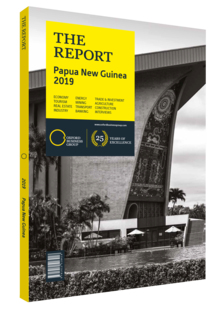Subsea cables connecting Papua New Guinea to Australia and Solomon Islands to boost internet speeds and capacity
The Coral Sea Cable System (CSCS), backed by Australia, appears to be on track for completion by the end of 2019, bringing an additional 20 Tbps of capacity to Papua New Guinea as of 2020. Several project milestones have been completed, with all but the system commissioning stage of the project under way as of September 2019. At present PNG relies on two subsea optical cables that provide approximately 2.5 Gbps of capacity. However, costs remain high and services slow.
Previously, a lack of government capital has made it challenging for PNG to invest in the infrastructure necessary to bring its internet up to par with regional standards. This has contributed to PNG having some of the slowest speeds and highest costs in the Asia-Pacific region. As of April 2019 the average download speed was 3.23 Mbps, compared with 20.9 Mbps in New Zealand and 39.33 Mbps in Australia. Meanwhile, monthly fibre-optic broadband prices cost between PGK640 ($194) and PGK800 ($243) per Mbps per month for capacities up to 1 GB.
Geopolitics
While the CSCS is a welcome development, project implementation has not been without controversy. Under the agreement, Solomon Islands and PNG are liable to cover one-third of its estimated $144.2m cost; however, it will not provide the funding until a number of caveats have been met. “The cable project is run by the Department of Foreign Affairs and Trade and contractors,” Paul Komboi, managing director of DataCo, which operates the country’s fibre-optic network, told OBG. “The network will eventually be converted to a special purpose vehicle that will be jointly owned by the governments of PNG and the Solomon Islands following completion of the cable network.”
Canberra was spurred to support the CSCS by a 2017 announcement by Chinese company Huawei that it had signed an agreement with Solomon Islands to construct a cable from Sydney to Honiara. Australia was reportedly concerned about a Chinese firm having access to its cable infrastructure, leading the country to lodge a bid in July 2018 that blocked Huawei’s participation.
Other attempts to thwart the Chinese giant have not been so successful. At the APEC Leaders’ Summit in November 2018, the US, Australia and Japan announced the Trilateral Partnership for Infrastructure Investment in the Indo-Pacific. While broader aims of the partnership were maintaining and promoting infrastructure development, the alliance also made attempts to pressure PNG to drop Huawei as the contractor for the Kumul Submarine Domestic Fibre Cable Network agreed to in 2016. The 8-Tbps, 5457-km submarine broadband cable network plans to connect PNG’s 14 main cities and population centres. William Duma, the then-minister of public enterprise and state investment, told local media at the time of the summit that his government would be sticking with Huawei.
Progress Report
So far, System 2 of the cable project has been completed, comprising connections between Madang and Port Moresby with three branching units and spurs into Lae, Popondetta and Alotau. The final sections are on track for completion at the end of 2019, with commercial services scheduled to debut in early 2020.
The bandwidth provided by the two cables will pave the way for lower costs and expanded coverage. “Prices should be substantially cheaper, and that would be a game-changer, especially for smaller companies that will be able to transact goods and services globally,” Rio Fiocco, president of the Port Moresby Chamber of Commerce and Industry, told OBG. However, DataCo will need to grow in volume if it is to bring prices down. In addition, while there will be improvements to internet services in urban centres, it will likely take years to link the telecommunications infrastructure to the more rural areas.
You have reached the limit of premium articles you can view for free.
Choose from the options below to purchase print or digital editions of our Reports. You can also purchase a website subscription giving you unlimited access to all of our Reports online for 12 months.
If you have already purchased this Report or have a website subscription, please login to continue.

